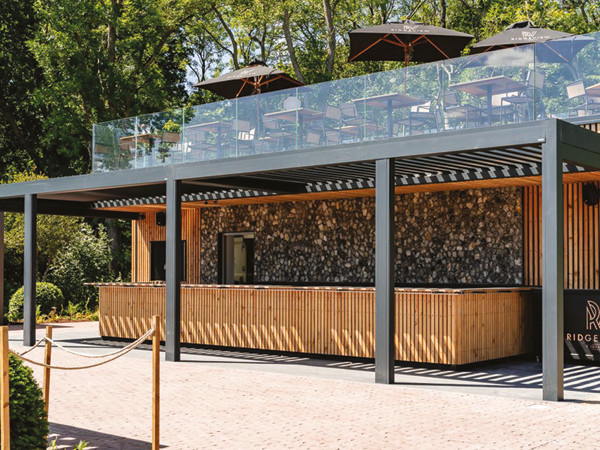
Guy Woodward: The case for wineries with soul
The World’s Best Vineyards awards are something of a misnomer. The competition recognises wineries for the quality of their visitor experience rather than their vineyard – tourism over terroir, if you will. But they are no less reputed, or noteworthy, for that.
Catena Zapata was crowned number one this time around, to much fanfare. I visited the winery years ago, but I was on a press trip, so can’t really comment on the tourism offering (though if Laura Catena has anything to do with it, I’ve no doubt it’s spectacular). I have, though, been a guest of both the second-placed winery Marqués de Riscal and last year’s winner Marchesi Antinori as a bona fide, paying tourist.
I visited Antinori’s spanking newish Chianti HQ this summer while on a wider Tuscan tour. Unusually in Italy, we had been told to be prompt, and to arrive at 9.45am for our 10am tour. We arrived at 9.42am and, sure enough, were made to wait in our car for three minutes by a rather officious chap in his security kiosk before the barrier was duly lifted.
The place itself is astonishing – a vast, 50,000m2 facility built into the contours of the Chianti countryside, the costs of which spiralled as extravagantly as the faux weathered steel stairs that cascade down into the underground cellars, finally clocking in at well over €100m.
We joined a tour of 14 from Brazil, Colombia, Belgium, Germany, South Africa and the US, whose first stop was an auditorium that was bigger than that of my local cinema, to watch a corporate video complete with soft-focus shots of the Antinoris strolling through the vineyard, wicker baskets of grapes in hand.
On the winery tour itself, the only question came when the guide mentioned the process of malolactic fermentation and someone asked what this was. The host admitted she didn’t actually know, but that it made the wines better; no one seemed to care about the finer details. We tasted four wines in a boardroom-like setting overlooking the barrels before exiting into the well-stocked gift shop, which was doing a brisk trade.
For comparison’s sake, I dropped in on a winery 15 minutes down the road that I’d never heard of. After a swift, effectual tour of the Casa Emma cellar (one of very few cellar tours that I actually wanted to last longer, given their intriguing experiments with terracotta amphorae) we were ushered upstairs for a leisurely tasting and lunch on the homely terrace. We ate and drank overlooking the vines and cypresses to a similarly bucolic soundtrack of the calling cicadas.
The wines were not a patch on Antinori’s (the mere 94 points from James Suckling was a telltale sign; I’m not sure such a score is something to boast about these days) and the glassware was awful, but as I surveyed the unattended, unpretentious gift shop, which looked as if it could have been (and probably was, at one stage) the owner’s front room, I knew where I was more tempted to spend my money.
Looking through the full WBV list, the awards tend to reward a certain luxury element. This is understandable – it’s only natural to favour the bigger places with the eye-catching spas, ambitious architecture and five-star accommodation. And the judges can’t get around every little outpost in rural Oregon, Patagonia and New Zealand. But for me, the most rewarding winery experiences aren’t those with Frank Gehry-designed hotels or Caudalie bathroom products. They’re the ones with character, personality and a sense of soul.
The two UK wineries on the list, at numbers 61 and 90 respectively, are Gusbourne and Nyetimber – purveyors of the two English prestige cuvées, Fifty One Degrees North and 1086, priced to compete with Krug and Dom Pérignon. I was surprised to see Nyetimber on the list. The winery is only open to the public on occasional days and for the odd luxury dinner (the latest of which, with “esteemed chef Josh Angus of Hide”, is priced at £250 per ticket).
Wine tourism is going to be massive in the UK over the next decade. Last month I took in three estates on a busman’s holiday around Sussex: Wiston, Ashling Park and Ridgeview (pictured). All of them boast wonderfully personable, unpretentious, characterful restaurants, tours and – in two of the three – accommodation, all with a real sense of charm.
If I was designing a visitor experience around vineyards, particularly in this country, that’s the first quality I’d be aiming for. Even if it meant not winning awards.




